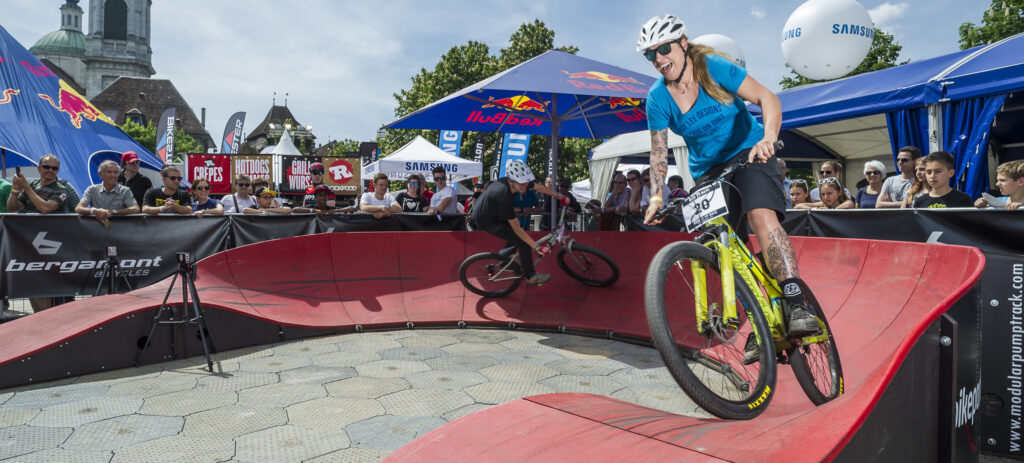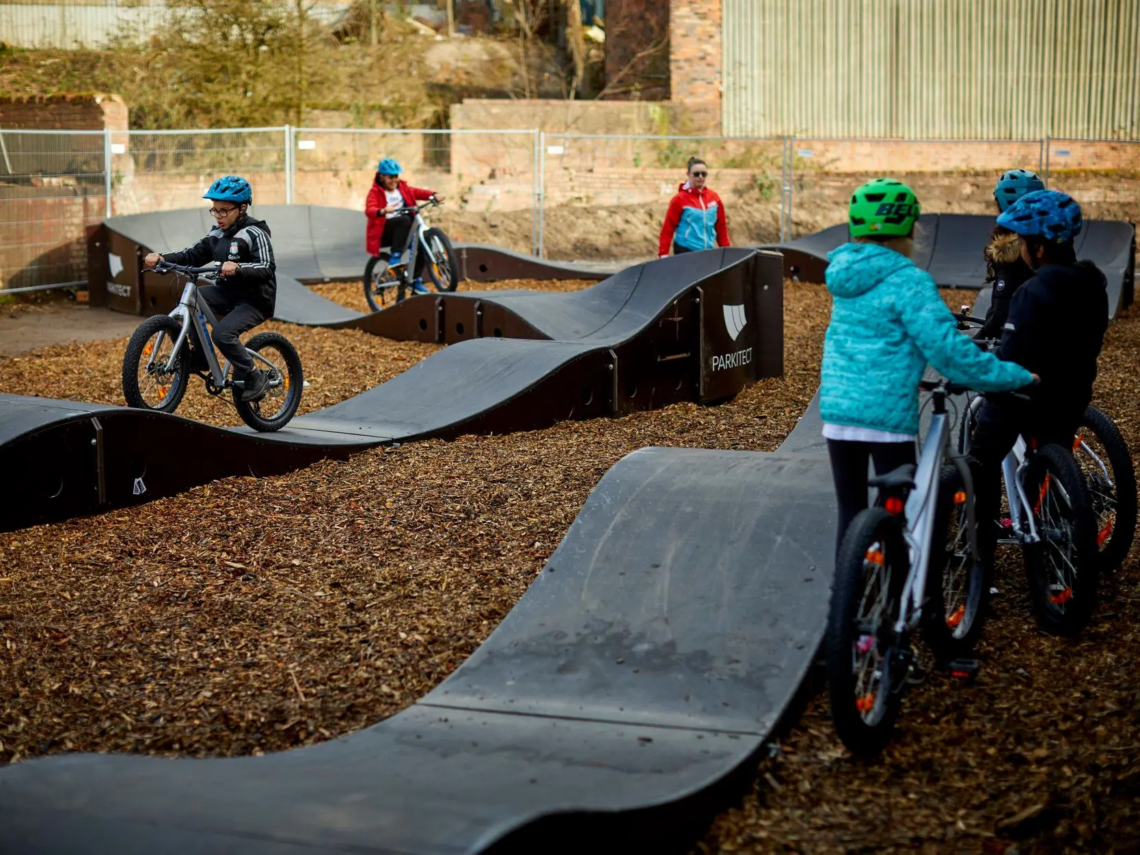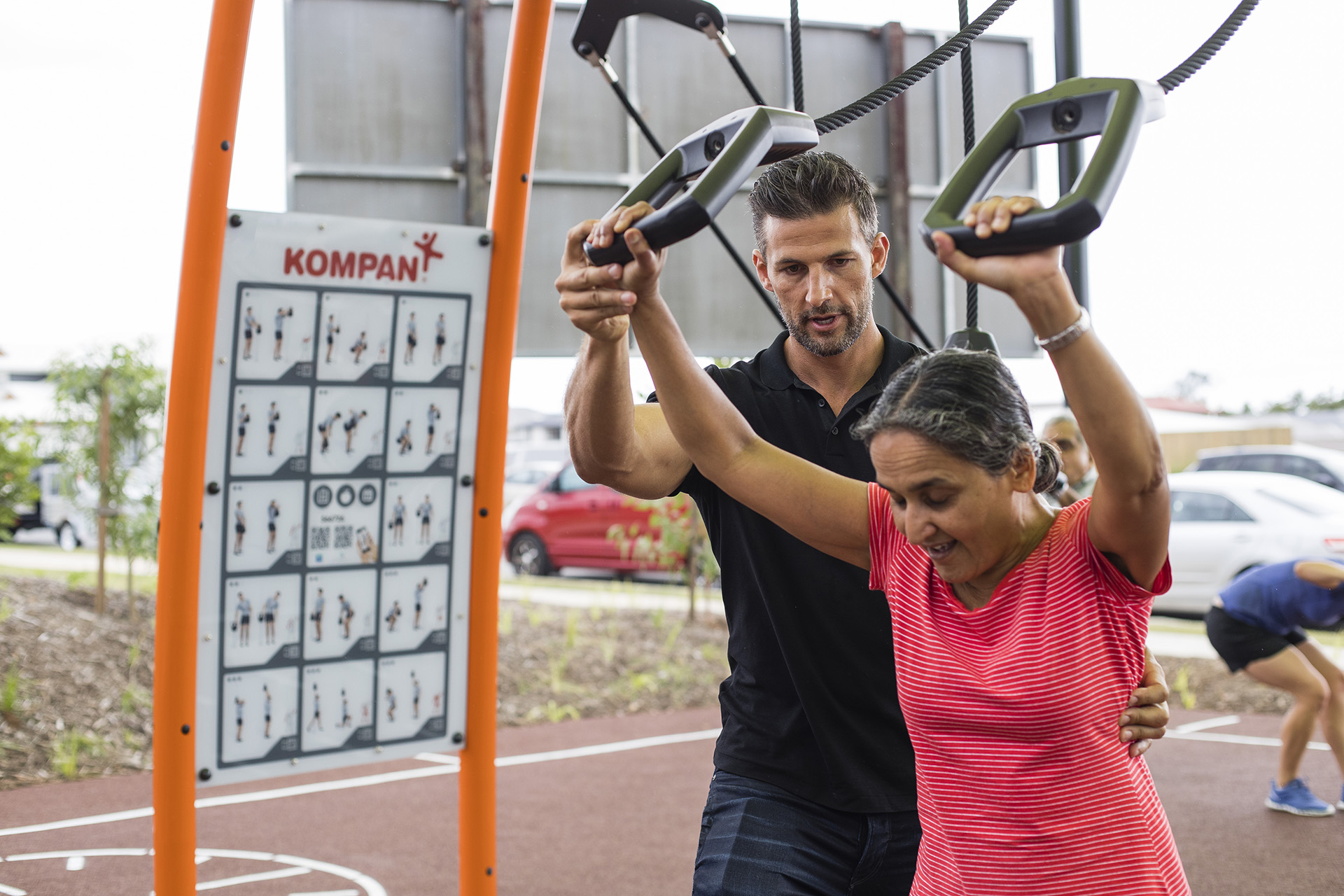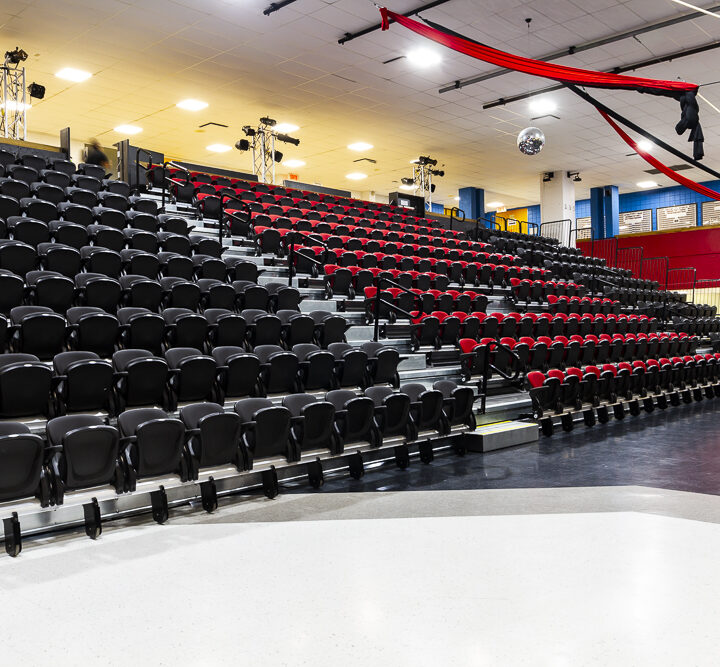We came across the Singletracks article “Pump Tracks for Everyone! The Gateway Drug to Mountain Biking”, where writer Jeff Barber discovers a pumptrack track built in his hometown. Barber’s article is the inspiration for this article, and how pumptracks are inspiring new generations of mountain bikers.
Pumptrack, the perfect introduction to mountain biking
Barber describes how, while under quarantine during the pandemic, he finds dozens of cyclists on a homemade track built in a local park. His 7-year-old son is “addicted” to pumptrack and insists on spending hours on it every evening. And now we’re giving back: pumptracks “give back” to the mountain bike community, increasing access to trails in urban areas and stimulating interest in the sport.
We could say that we’ve come full circle – or better still, that the trail has come full circle!

A track for training and testing
We can thank the mountain bike community for the invention of pumptrack. The first pumptrack circuit was built by professional cyclist Steve Wentz in Boulder, CO USA, in 2004. Made of earth, pumptracks were originally built for mountain bikers and BMX riders to train and test equipment. It was easier for cyclists to access a pumptrack on site than to use a track on public land.
Mountain biking generally involves riding onsingle-track trails and dirt roads. The sport has grown to include downhill courses and even covered runs. Pumptracks have always been popular with these cyclists, while attracting new enthusiasts to the sport.
Increasing access to mountain biking
Pumptracks installed in local communities deliver almost instant results, drawing crowds to your site. A study carried out in Cologne showed that hundreds of cyclists a day turned up just a few days after installation, with constant use over the three months of the study.
The tours offer a low-risk introduction to mountain biking. All mountain bike trails present risks associated with the unknown. New cyclists may be afraid of falling off, getting lost, not knowing how to negotiate unknown obstacles, whether they have the right equipment or whether they’re fit enough for the distance.
Modular pumptracks are more restricted environments: the track is short, but cyclists can make endless loops. It’s easy for new users to observe others, learn new skills and practice them over and over again to develop them quickly.
Mr. Barber expresses his enthusiasm for the accessibility of the pumptracks:

Improve cycling skills through frequency and repetition
Just like the first pumptracks, today’s pumptracks help cyclists rapidly improve their skills. A well-located pumptrack, with plenty of features in a small space, offers cyclists constant movement and training.

How to stimulate interest with a local trail?
If you’re wondering whether it’s worth installing a pumptrack in your community, think about the impact it will have on children of all ages and how it will help boost cycling activity in general in your community. Barber notes that while interscholastic programs are effective in getting teens and their parents involved in the sport, “pumptrack trails broaden the scope,” offering a resource for two-year-olds on balance bikes, teens improving their jumping technique and adults perfecting their turning skills. Cyclists can then use these skills when out on the trails. There’s no doubt that installing a pumptrack in your town will help boost the local cycling industry.

Let’s make sure the relationship between mountain biking and pumptrack keeps the wheels turning.
For more information on the Parkitect modular pumptrack, visit our product page.
Want to try it out? Visit one of our facilities!
- Parc de la Commune, Varennes
- Municipal Park, Saint-Mathieu
- Parc Jean-Claude-Crevier, Repentigny
- Parc Loiselle, Mercier
- Parc de la Clairière, La Prairie
- Parc Mi-Vallon, Sherbrooke
This article was inspired by Parkitect’s article ” Pumptracks Are Paying it Back – and Forward – to Mountain Biking “.







